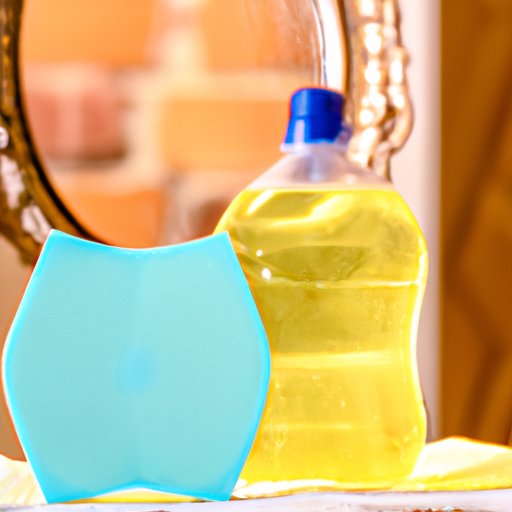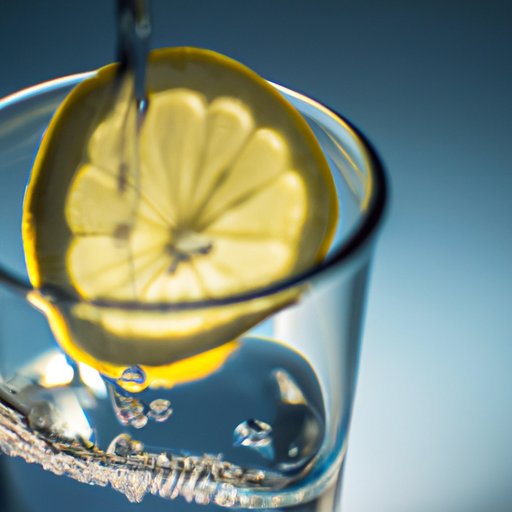
Introduction
Cleaning mirrors can be a tedious task that requires special attention. Mirrors are a common fixture in most households and can easily get smudged, stained or covered in dust. Finding the right method to clean them can be challenging, but it does not have to be. In this article, we will discuss various ways to clean mirrors with simple DIY solutions and commercial glass cleaners for a spotless finish.
The Traditional Way: Using A Glass Cleaner and Microfiber Cloth
An excellent way to clean mirrors is using a glass cleaner and a microfiber cloth. Spray the cleaner onto the mirror, using enough to cover the surface. Next, use the microfiber cloth to wipe the surface gently. Be sure to start from the top and work downward to avoid streaking. When using the glass cleaner, make sure to follow the instructions on the product. Some cleaners may require diluting before use, while others require rinsing after wiping. To get a streak-free mirror, avoid spraying too much cleaner and use a gentle hand during cleaning.
The DIY Way: Homemade Mirror Cleaner with Vinegar and Water
Using vinegar and water is a budget-friendly way to make a lasting homemade mirror cleaner. To create this cleaner, mix equal parts of vinegar and water in a spray bottle. Spray the solution onto the mirror, and use a microfiber cloth to wipe it clean. Vinegar, although acidic, is safe on mirrors and effectively removes smudges and dirt. It also leaves mirrors with a natural shine. When using vinegar solution, make sure to spray lightly as too much solution can cause streaking.

The Natural Way: Using Lemon and Water
Lemon and water make an excellent combination to naturally clean mirrors. To create this solution, squeeze fresh lemon juice into a spray bottle and fill the remaining space with water. Shake well and spray the solution onto the mirror. Using a microfiber cloth, wipe the mirror gently in a circular motion for a streak-free finish. Lemon is an excellent natural cleaner that leaves mirrors smelling fresh. Additionally, lemon contains natural antiseptic properties that help kill bacteria on mirrors.
The Pro Way: Using A Squeegee and Soap
Cleaning mirrors with a squeegee and soap is a commonly used method by professional cleaners. To clean mirrors using this method, first, apply a few drops of liquid soap to a bucket of warm water. Dip the squeegee into the soapy water and start wiping the mirror from top to bottom. Make sure to overlap each section to avoid missed spots. Once you have cleaned the entire mirror, use a clean and dry microfiber cloth to wipe away any excess moisture, reshaping the squeegee after each pass. This method saves time since cleaning with a squeegee covers a larger area and leaves less moisture on the mirror surface.
The Steam Clean Way: Using A Portable Steamer
A steam cleaner can also be used to clean mirrors. To steam clean your mirrors, fill your portable steamer with water and turn it on. Once the steam starts to come out, point the nozzle directly at the mirror. Slowly move the nozzle over the mirror, covering the entire surface with steam. Lastly, wipe the mirror using a microfiber cloth to remove any excess moisture or residue. Steam cleaning leaves mirrors spotless, and it is a safe and effective method. However, be careful not to use too much steam as it can cause damage to mirrors or other nearby surfaces.
The Toothpaste Hack: Using Toothpaste to Clean Your Mirror
Toothpaste can be used as a quick solution to clean mirrors, making it perfect for emergency situations. Apply a little toothpaste on a damp microfiber cloth and start rubbing the solution gently over the mirror surface. Be sure to remove all traces of toothpaste by wiping down the mirror with a clean, damp cloth after cleaning. Toothpaste contains an abrasive substance that helps scrub away stubborn stains or smudges on mirrors and restores their natural shine. However, avoid using toothpaste with bleach or gel ingredients, which can cause damage to your mirrors.
The Dusting Method: Using A Feather Duster Before Cleaning
Feather dusters are perfect for preparing your mirrors for cleaning. Before cleaning your mirrors, use a feather duster to remove any dust or debris from the surface. This will make your cleaning process much easier and effective. Feather dusters are perfect for getting into tight spaces, crevices, and corners where dust accumulates. Avoid using a dry cloth or paper towel to dry your mirrors as these materials tend to scatter dust, making cleaning more difficult.
Conclusion
Cleaning mirrors isn’t rocket science, but it does require care and attention. The methods outlined in this article offer different ways of cleaning mirrors, whether it’s using natural ingredients or commercial glass cleaners. Hopefully, with these tips and ideas, you can keep your mirrors clean and shiny. Remember to clean your mirrors regularly and choose a cleaning method that suits your preferences. Experiment with different methods to find the one that works best for you. With a little time and effort, your mirrors will look brand new again.





